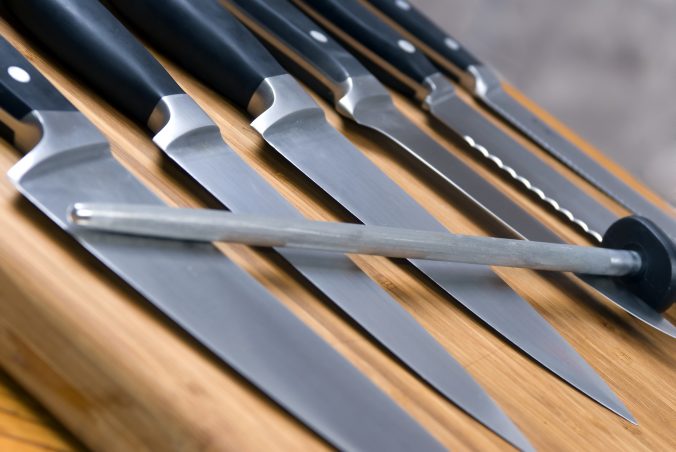Prepping and cooking food at home is the top way to save more money and eat healthier. Yet, this doesn’t mean you have to sacrifice on chef-inspired meals.
To cook like a culinary master, it’s essential to learn how to use kitchen knives. Certain techniques make it faster, easier, and more efficient to prep food.
So, ready to learn how to cut, chop, slice, and dice like a chef? Read on to learn more about how to master your knife skills.
Choose the Right Knife for the Job
It’s key to know the difference between your knife types. A kitchen knife set includes pieces for almost every job in the kitchen.
A few knife types include bread, steak, paring, and fillet. Boning knives, carving knives, and butcher knives are other styles a chef should own. You should hone your chef knife skills for each of these knife types.
Yet, there is one knife style that is king when it comes to prep work. A chef’s knife is a multi-functional knife that is used for more than one task in the kitchen. It’s ideal for chopping, slicing, dicing, and mincing foods like meat and vegetables.
Chef Knives
This style of knife has a pointed tip with a longer blade design with a slight curve. The blade’s tip allows a chef to create a rocking technique as they cut. This is ideal for the quick chopping of fresh herbs, garlic, and onions.
The design allows you to keep the tip of the knife touching the cutting board as you chop. Chef’s knives are a bit heavier, which makes it easy to cut and score meat.
Santoku Japanese Chef Knives
A Santoku knife is ideal for creating fine clean cuts at a fast speed. It lets you master knife techniques for cutting seafood, meat, vegetables, and fruits.
The knife has a flatter and wider blade design and is lighter than a chef’s knife. Its tip is down more towards the end of the blade.
Santoku knives help remove food from the cutting board into your cooking pan. Some of these knives also have depressions on the blade called a “Granton edge.” This works to create less friction to stop food from sticking to the knife as you cut.
Keep Your Blades Sharp
Any knife guide for better care will tell you to always keep your blades in top condition. Sharp blades make it easier and more efficient when chopping food. A dull blade will lead to a much longer food prep process and can also be unsafe.
Experts recommend sharpening your knife every few months. You have a few different knife sharpener options to consider for this. You can use a manual knife sharpener tool or an electric knife sharpener.
Chef’s knives may call for more sharpening sessions. They are often made from softer steel than Santoku knives.
Proper kitchen cutlery storage options are also important when caring for your knives. You can use a knife block to protect the blades when not in use. This also keeps your kitchen environment safer.
Magnetic knife strips, knife bags, and sheaths are other options. When cleaning your knives, hand-wash them with mild soap and hot water.
Hold the Knife in a Comfortable Position
Proper knife cutting techniques also include learning how to hold a knife. This is key for having confidence in the kitchen.
Be sure to use the right grip when handling your knife. The hold should not be too firm and should fit comfortably in your hand. This allows you to perfect your cutting method and be as quick and safe as possible.
It’s best to use your index finger and thumb to grip the handle of the blade. Hold the handle up higher with your two fingers touching the base of the blade. The rest of your hand then holds onto the actual knife handle.
Holding the knife at elbow-height will also give you better control. When holding food to be cut, be careful of the way you keep your hand.
Use a claw-like grip to hold food as you cut with the knife in your other hand. This keeps your fingers out of the way of the knife’s blade.
Use Consistent Cuts
Certain knife cuts call for different techniques to prepare food. It always helps to cut round food in half, like onions and potatoes. This gives you a flat surface to work with making it easier and safer to cut.
A slicing technique involves long thin pieces. Position the knife’s tip on the cutting board at an angle. Then move the food toward the blade as you bring the knife down in a repetitive chopping or sawing motion.
Chopping is less consistent than other cutting methods. The chunks are made a bit larger and more bite-sized.
Dicing can be done in large, medium, or small pieces. Yet, the key is to keep the food cuts as consistent in size as possible. Aim for cubes about a quarter-inch in size.
When mincing, you want to cut the food up as fine as possible. It’s most often used for garlic, ginger, and onion.
Preparing food julienne means making matchstick-sized cuts. These should be about an eighth of an inch thick.
For brunoise style, you dice foods that have first been cut julienne-style. The result is small cubes about an eighth of an inch in size.
The chiffonade technique is most often used for greens and herbs. It cuts them into thin ribbons for a salad or garnishes.
Perfecting Your Knife Skills With the Right Set of Tools
These knife skills will teach you to be a master chef in no time. The right tools, techniques, and knife care are key when learning to prep food like a professional.
A quality chef’s knife is one of the main tools to have in your kitchen. Browse the full collection of chef’s knives to find one that suits your cooking style.





Leave a Reply